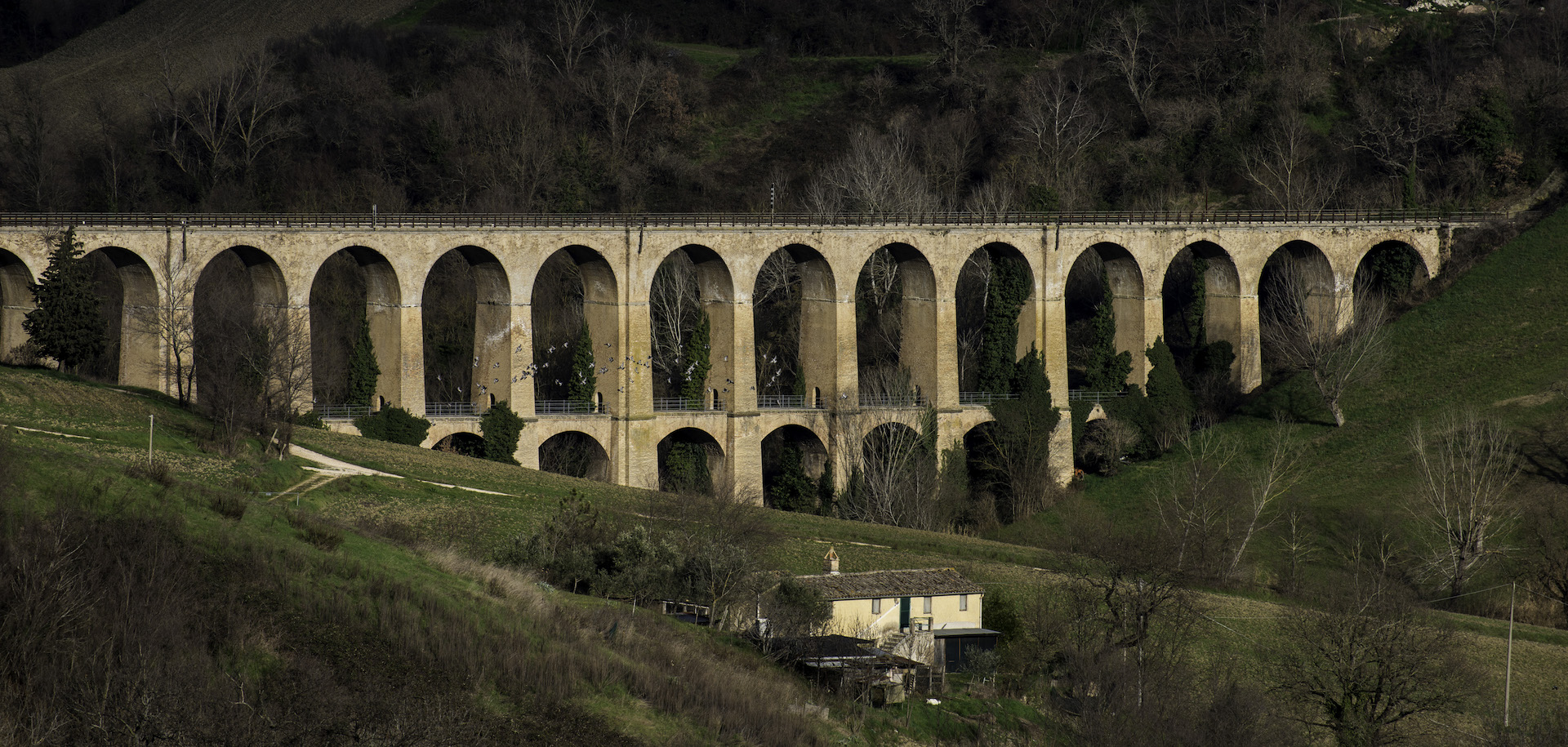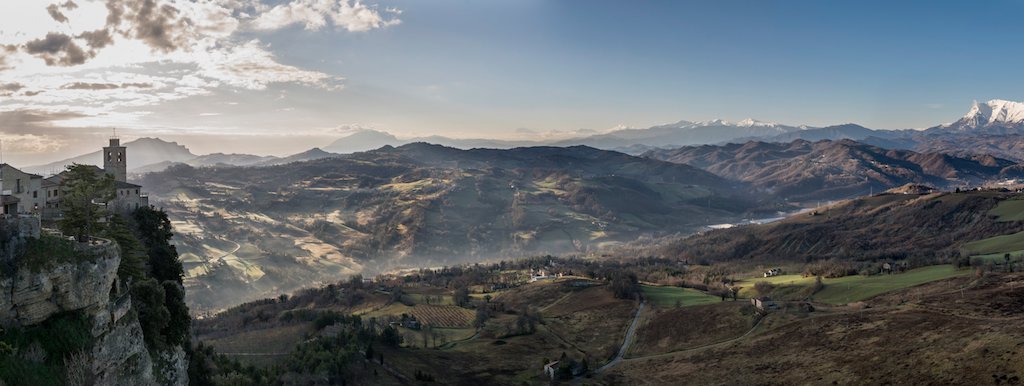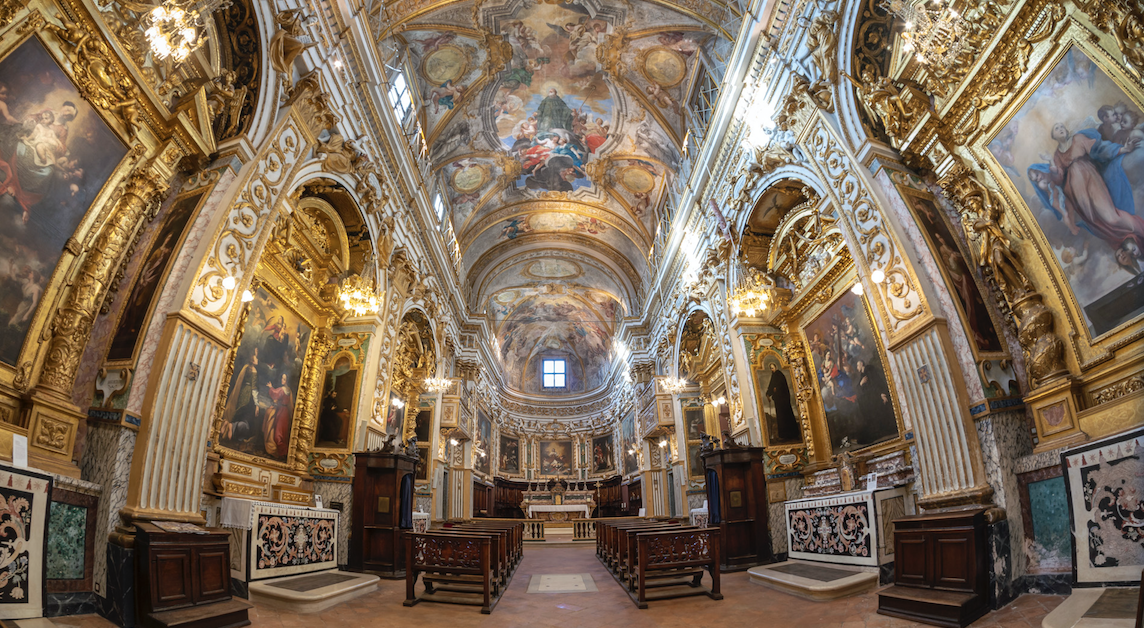Water sources, fountains and wash houses
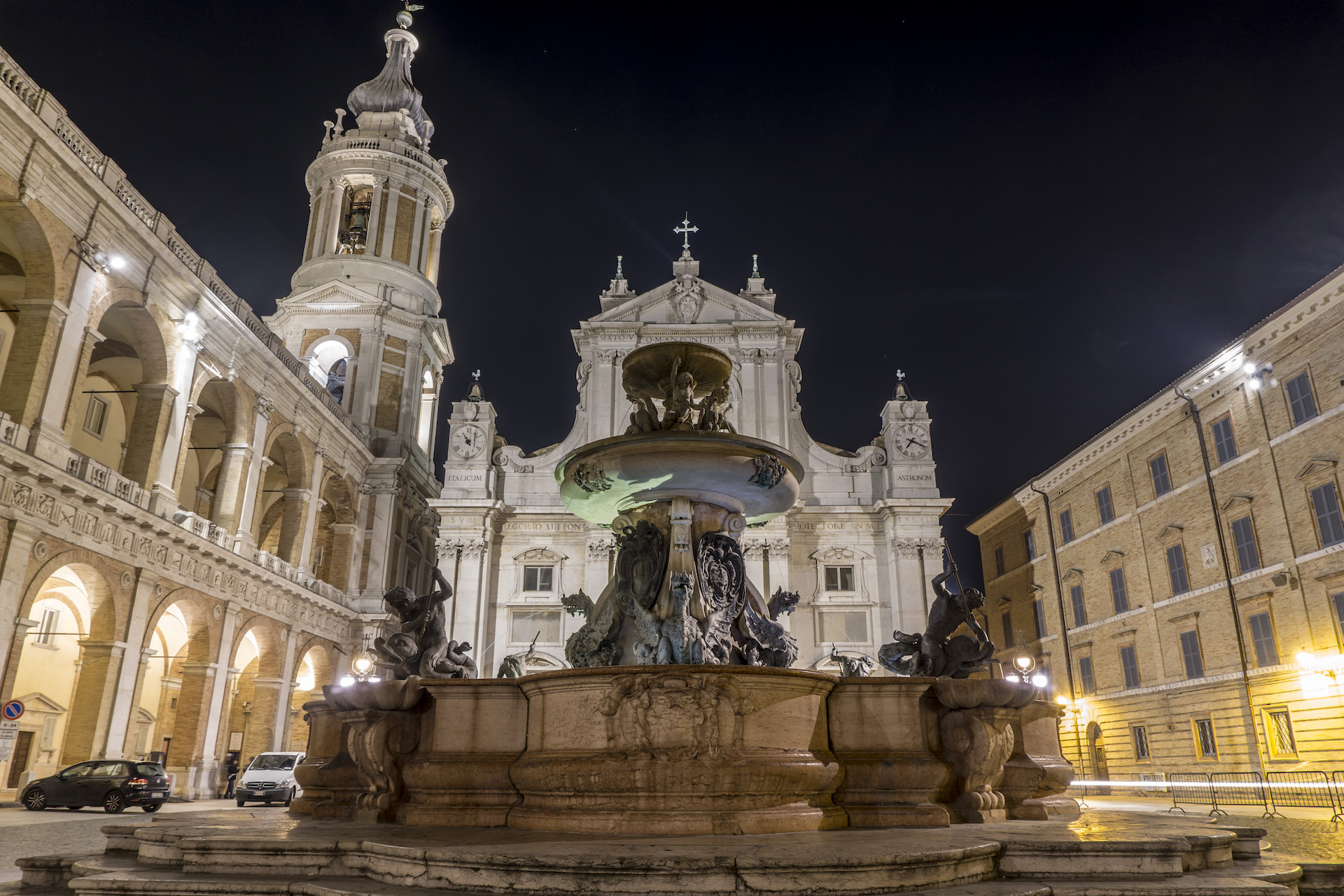
Calamo Fountain in Mazzini Avenue in Ancona (AN)
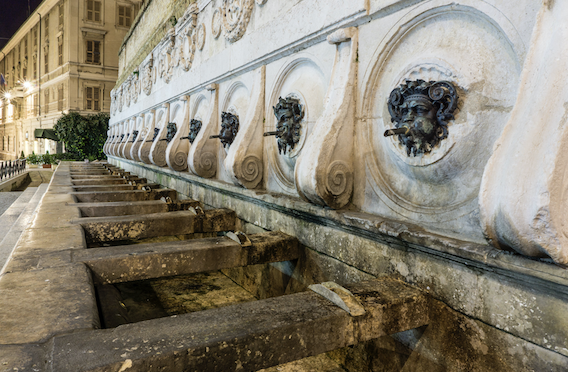
People in Ancona call it “Fountain of the thirteen taps” clearly referring to the number of its water sprouts. An assaulting knight, the symbol and emblem of the city, stands above 12 great bronze masks and a stone one in the centre, supposed to portray as many satyrs and fauns. The very ancient monument rises on the location of two preexisting constructions, a Greek and a more recent medieval one. Embodied inside the city walls precisely during the middle ages, the Fountain was built in its current appearance by artists from Recanati in 1560 based on a project by architect Pellegrino Tibaldi.
Fountain of Dolphins in Marconi Square, in Cerreto D’Esi (AN)
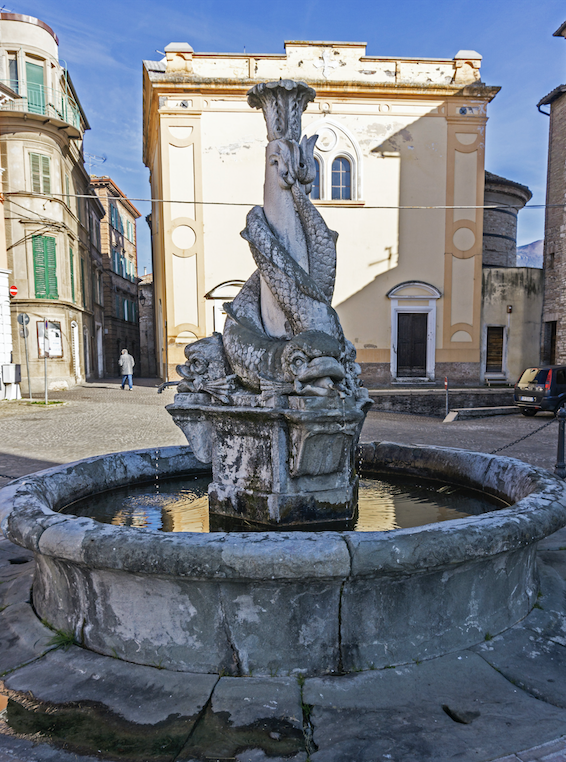
A first, unrealized project, dates back to 1888. The fountain was made based on a second one designed in 1890, and completed in 1894. Built with sandstone from Signa, in Tuscany, it is a circular basin; at its centre, a triangular pedestal sustains a column with a Corinthian capitol, around which wind up three dolphins, each resting its head on a corner of the pedestal.
Source of the beheaded in Plebiscito Square, in Ancona (AN)
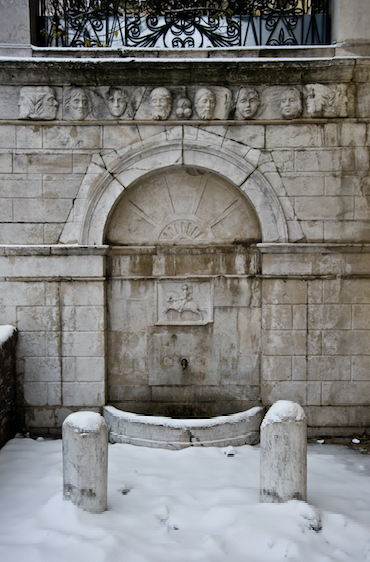
Also called “Fontanone” (“Big Fountain”), it dates back to the XV century. Its low reliefs are supposed to celebrate the young martyrs who fought to restore the communal freedom lost after pope Clemens VII, with a coup, put an end to the Republic of Ancona in 1532.
Fountain of the Horses in Roma Square in Ancona (AN)
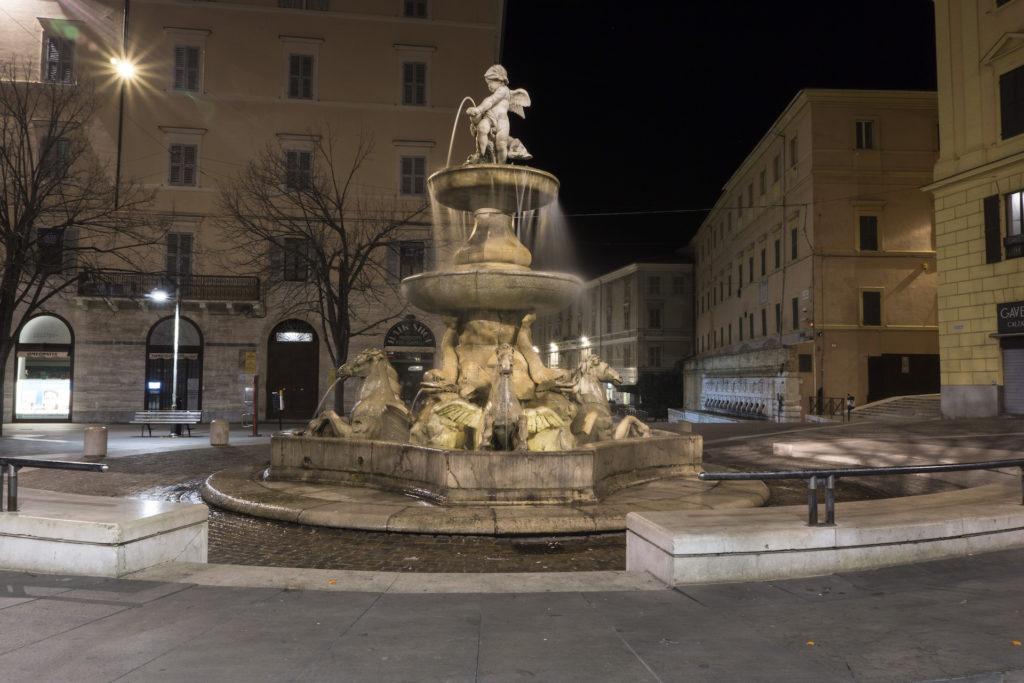
History brings us back to 1758 and to three displacements to strategic points of the city. Nowadays it is the most famous fountain in Ancona. Its sculptures recall two attitudes of the sea, both well known in Ancona: the hippocampuses, sacred to Poseidon, recall the storms which, according to mythology, could be triggered by the sea god; the dolphins, sacred to Aphrodite, represent the quiet sailing.
Fontana Maggiore in Square of the Madonna, in front of the Holy House in Loreto (AN)
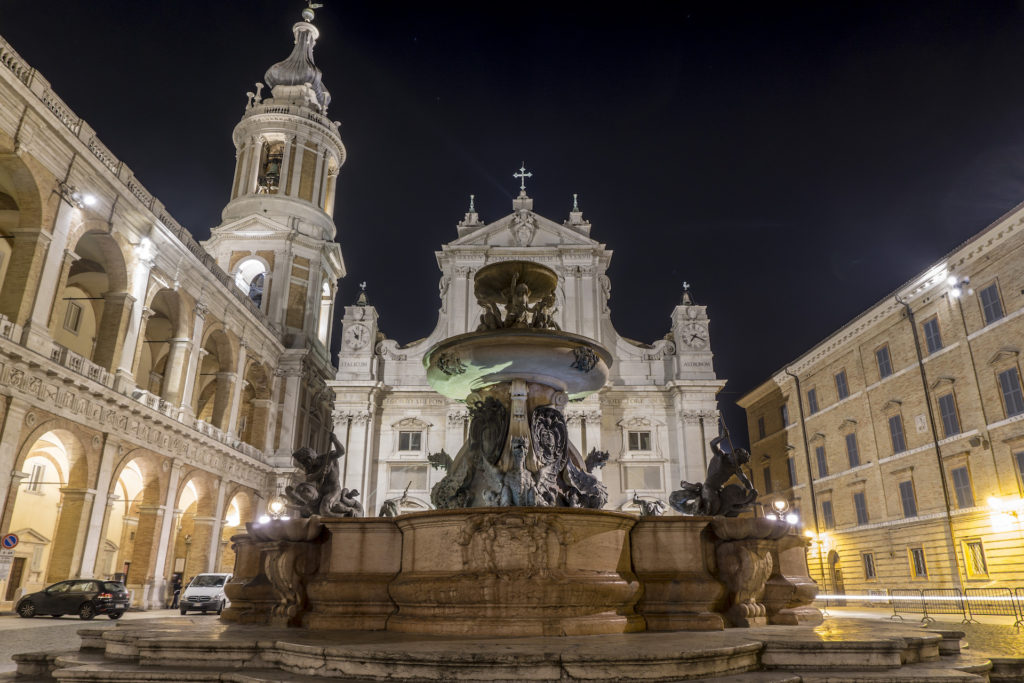
A superb example of a baroque fountain in our region, its construction was decided by the papal legates in the 17th century to satisfy the needs, including the hygienic ones, of pilgrims. It was built by architects Giovanni Fontana and Carlo Maderno between 1614 and 1620 and completed with the pose of bronze statues made by sculptors Tarquinio and Pietro Iacometti from Recanati.
Fountain of the seven taps, in St. Barbara street in San Severino Marche (MC)
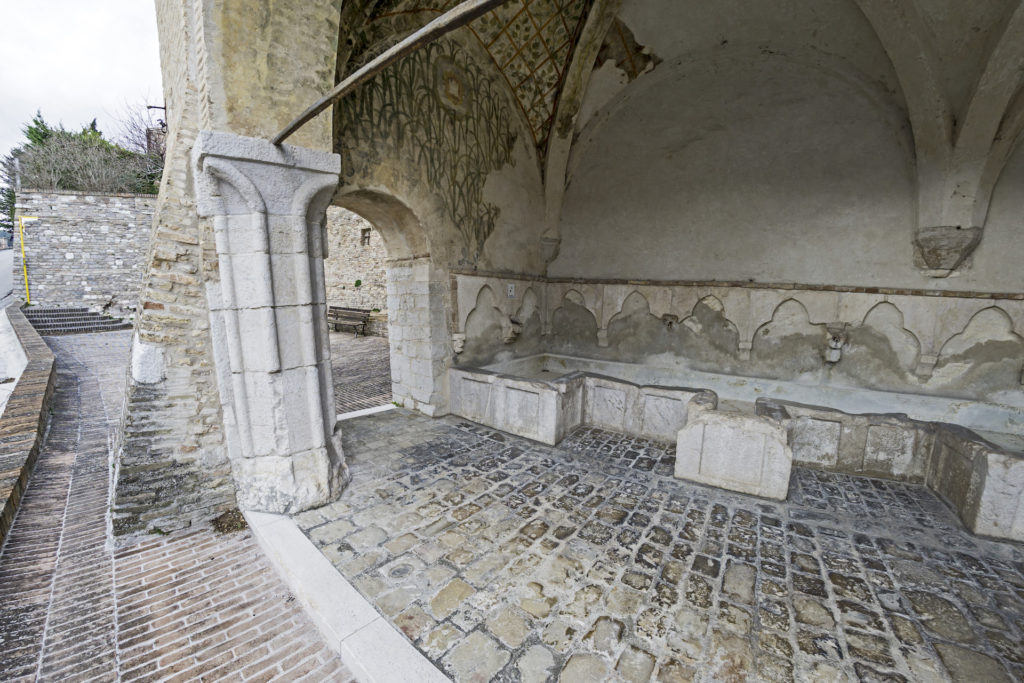
The Fountain of the seven taps dates back to the 13th century. It was originally called “Fountain of the Valley”, but was later named after the seven taps that fed it. The elegant construction, with a two arched portico originally laying on fluted columns, was restored and reconstructed many times. In the 17th century the cross vaults were painted with floral motives recalling a pergola, and on one of the walls an image of the Madonna of the Lamps was painted, with St. Severino kneeling at her feet.
Two fountains in People’s Square in San Severino Marche (MC)
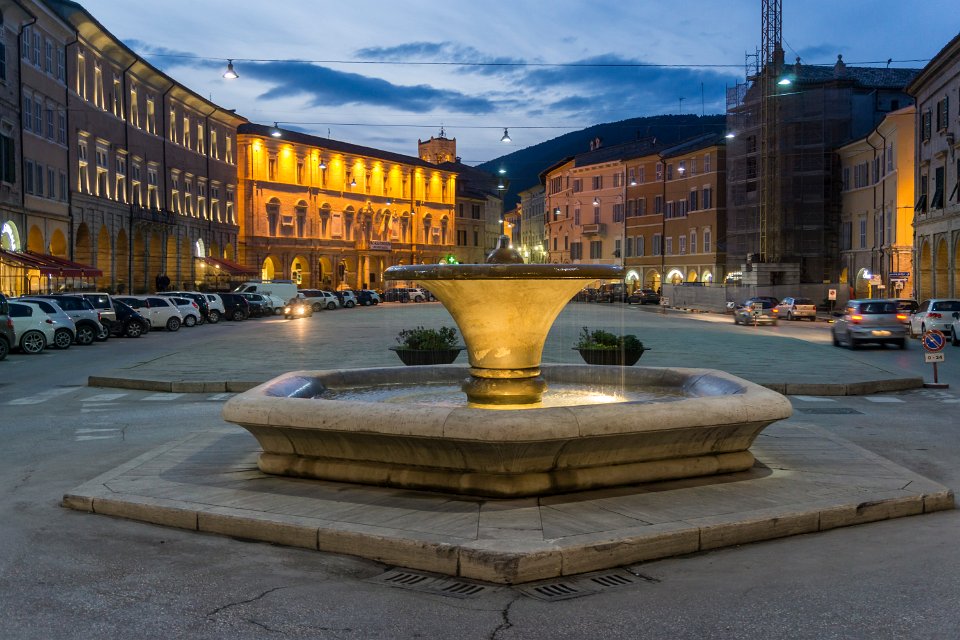
They were placed there in 1937 to embellish the monumental square, which not accidentally is considered one of the most beautiful in Marche.
Octagonal Fountain in Mattei Square in Matelica (MC)
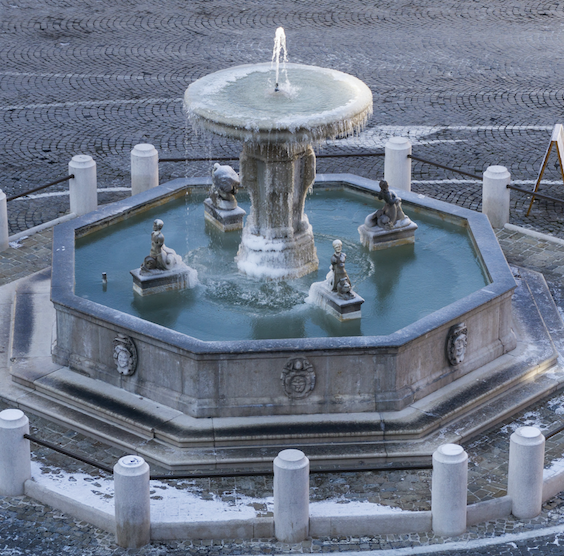
It was built in 1619. Inside, four symbolic creatures show the cardinal points; a Mermaid, a Triton, Neptune and an Eagle. According to a popular tradition, those who run seven times around it are granted the “Patente da Mattu” (“Madness certificate”)
Bad Weather Fountain in Garibaldi Avenue, in Cingoli (MC)
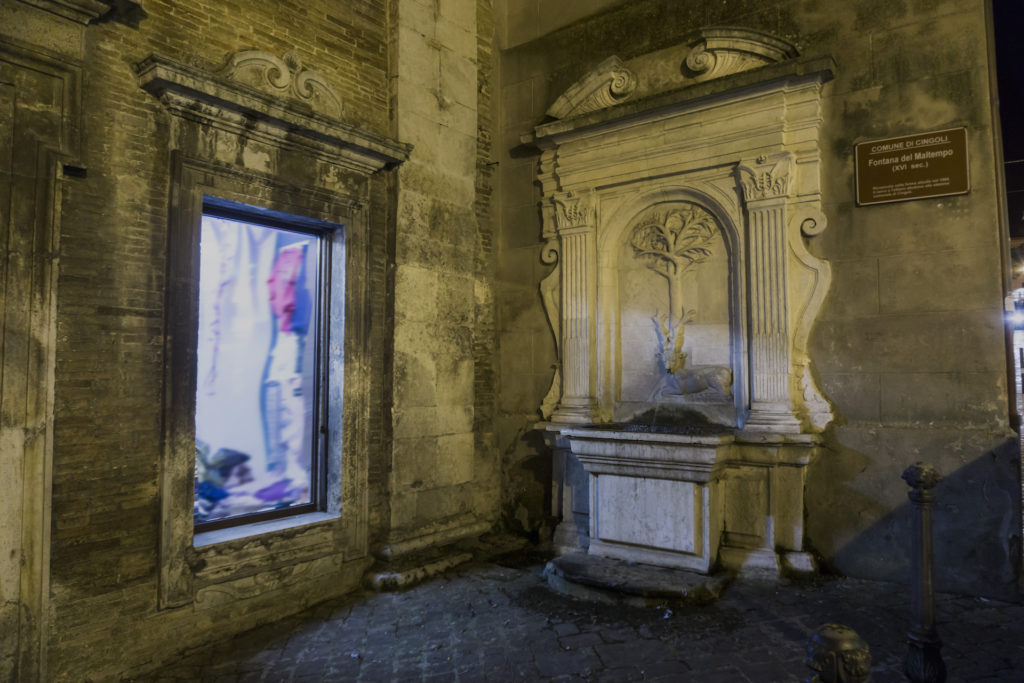
The “Bad Weather Fountain”, mentioned in a document dating back to 1513, was restored and brought to its current aspect in 1568 by the Lombard Workshop, a group of Sansovino’s pupils. Its name is due to the fact that water used to spread copious after strong rains only. A deer resting under a yew tree, a variation of the city’s coat of arms, is portrayed on it.
